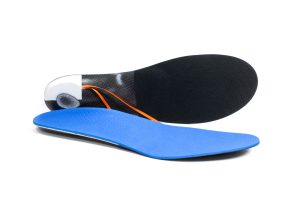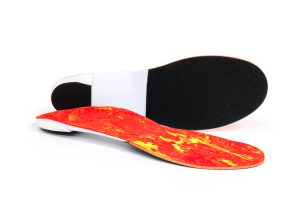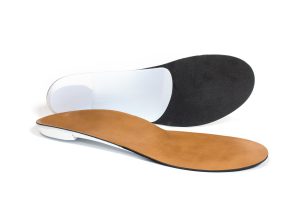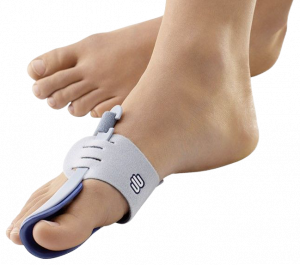Have a Doctor’s Referral?Book now
Treatment depends on the degree of deformity. The only way to truly remove a bunion is through surgery.
However, there are other non-invasive methods for correcting, managing, and preventing bunions.a
One big contributor to bunion formation and painful symptoms is improper foot mechanics. Although bunions themselves are not necessarily hereditary, genetics can make you more susceptible to developing them. For example, if overpronate when you walk, an increase of pressure builds on the instep on your forefoot. This causes your big toe to deviate inward, towards your other toes.
It is not inevitable, however. The foot type, not the bunion, is inherited and you can take measures to prevent bunion formation before it starts.



Wearing custom orthotics help correct alignment issues and can redistribute that pressure to relieve the bunion. Additionally, wearing custom orthotics can stop it from progressing by accommodating your biomechanical needs. For flexible feet that overpronate, orthotics will support and re-align the foot structure to reduce the pressure on the inside of the first MTP joint. Meanwhile, for rigid feet that underpronate, orthotics will distribute weight throughout the foot and reduce the pressure building up in the forefoot.
At Kintec, we have a variety of custom orthotics created for your specific biomechanical and activity needs.
Footwear can be a great contributor to the formation and progression of bunions. That is why it is important to find shoe features that will properly accommodate your foot. Here are features to look for in footwear that will help alleviate bunion pain, as well as some features you can have built into the shoes you already wear.
Wearing tight-fitting or constricting footwear can help existing bunions progress and will make them feel even more painful. This includes shoes with heavy stitching or multi-layered upper designs, which do not easily stretch around your foot.
Instead, choose shoes with a natural leather upper or synthetic shoes with minimal stitching, which will feel more comfortable and accommodative.
Your shoes can be altered to accommodate bunions. Two common modifications for footwear are balloon patches and custom rocker soles. To create a balloon patch, we cut out the material over the bunion. Then, we replace it with leather, which has more stretch. This modification works best with a leather shoe.
A custom rocker sole will allow for a natural roll off through the toe, without placing too much strain on the big toe joint. As well, there are multiple styles available that already have a natural rocker built into their design.

Also called hallux valgus splints, you can wear these at night to assist with realigning the big toe. There are a few styles available, such as the Bauerfeind Valguloc.
Some splints have a joint hinge that can allow the wearer to use it around the house as well. While night splints will not permanently realign the toe joint, they can slow the progression of the bunion as well as help the toe maintain a better position during the day.
While they don’t provide the same type of stretch as splints, toe spacers can be worn during the day inside your shoes to prevent the big toe from chafing against the second toe.
However, you must be sure that your shoes have enough room to accommodate toes spacers. You should only use a toe spacer if it doesn’t cause your bunion to rub against the inside of the shoe even more.
Over-the-counter anti-inflammatory cream can be an effective way to temporarily relieve joint pain.
P3 Cream (above) contains a combination of essential oils, including peppermint and eucalyptus, instead of harsh ingredients like alcohol, which can cause skin dryness.
If the bunion continues to cause pain even after home care treatments, prevents you from doing routine activities, or shows signs of infection like redness or swelling, see a physician about further treatment options. Doctors will typically base their diagnosis on symptoms and findings from special tests. X-rays are often taken to determine the integrity of the joints in the foot and to test for arthritis.
You will see a certified pedorthist who specializes in foot mechanics, conditions, and conservative treatments
or visit us in-store.
